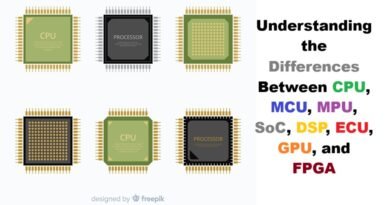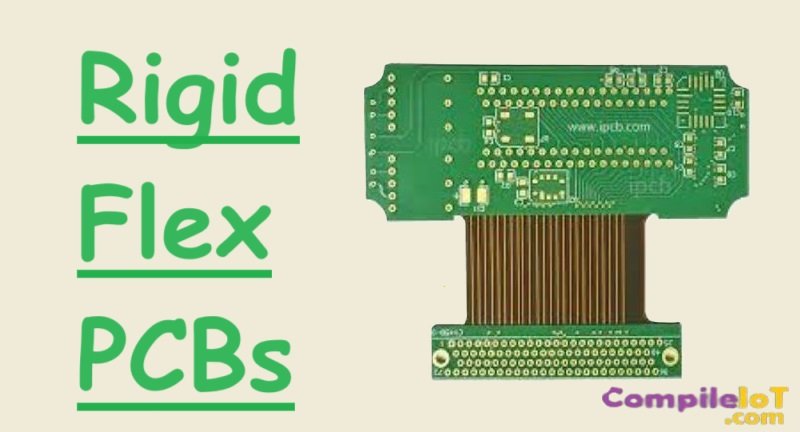What’s the Difference between EMI, EMS and EMC?
In today’s increasingly interconnected world, understanding electromagnetic phenomena is crucial for ensuring the reliable operation of electronic devices. Electromagnetic Interference (EMI), Electromagnetic Susceptibility (EMS), and Electromagnetic Compatibility (EMC) are key concepts that play a significant role in the design and performance of electronic systems. EMI refers to disturbances that can disrupt the operation of electronic devices, EMS is the measure of a device’s vulnerability to such disturbances, and EMC encompasses the overall goal of designing systems that operate harmoniously in their electromagnetic environment. Grasping these concepts is essential for engineers and designers to prevent malfunctions, ensure compliance with regulatory standards, and achieve optimal performance in electronic products.
What is EMI (Electromagnetic Interference)?
Electromagnetic Interference (EMI) is the disruption caused by electromagnetic waves that can adversely affect the performance of electronic devices and systems. It occurs when unwanted electromagnetic signals interfere with the normal operation of electronic equipment, leading to degraded performance, malfunctions, or complete failure.
How EMI Occurs (Sources and Mechanisms)
EMI can originate from both external and internal sources. External sources include other electronic devices, power lines, or radio frequency transmitters. Internal sources are typically components within the device, such as oscillators, power supplies, or high-speed circuits. EMI can be propagated through various mechanisms:
- Radiated EMI: Emitted through the air as electromagnetic waves.
- Conducted EMI: Transmitted through power lines or signal cables.
Types of EMI (Conducted and Radiated)
- Conducted EMI: This type of interference travels through electrical conductors, such as power and signal lines. It is often mitigated through filtering and shielding techniques.
- Radiated EMI: This interference is emitted into the air and can affect devices at a distance. Shielding and proper grounding are common solutions for controlling radiated EMI.
Examples of EMI in Everyday Devices
Common examples of EMI include:
- Radio Interference: Static or buzzing sounds on a radio caused by nearby electronic devices.
- Computer Malfunctions: Glitches or crashes in computers due to interference from other electronic equipment.
- Television Distortion: Picture or sound distortion in televisions caused by nearby electronic devices or transmission equipment.
What is EMS (Electromagnetic Susceptibility)?
Electromagnetic Susceptibility (EMS) refers to the ability of a device or system to resist or tolerate electromagnetic interference. It is a measure of how susceptible a device is to external electromagnetic disturbances that can affect its performance.
How EMS Affects Electronic Devices (Vulnerability to Interference)
Devices with high EMS are more vulnerable to interference from external electromagnetic sources. This can lead to degraded performance, erroneous operation, or complete failure. Factors influencing EMS include:
- Design Choices: The design of the circuit and layout can impact its susceptibility.
- Shielding: Effective shielding can enhance EMS by protecting the device from external interference.
- Component Selection: Choosing components with better immunity to interference can improve EMS.
Factors Influencing EMS (Design, Shielding, etc.)
- Design: Proper circuit design, including layout and routing, can minimize susceptibility to EMI.
- Shielding: Enclosures and shielding materials can block or attenuate electromagnetic waves.
- Filtering: Filters can be used to suppress unwanted frequencies and reduce susceptibility.
Examples of EMS Issues in Electronic Devices
Typical EMS issues include:
- Communication Failures: Interference causing data corruption or loss in communication devices.
- Performance Degradation: Reduced functionality or erratic behavior in electronic devices due to interference.
- System Crashes: Unexpected shutdowns or malfunctions in systems exposed to strong electromagnetic fields.
What is EMC (Electromagnetic Compatibility)?
Electromagnetic Compatibility (EMC) refers to the ability of a device or system to operate effectively in its electromagnetic environment without causing or experiencing unacceptable interference. It encompasses both the emission of electromagnetic interference (EMI) and the immunity to such interference. EMC ensures that electronic devices can coexist harmoniously without disrupting each other’s performance.
The Goal of EMC (Minimizing EMI and Ensuring Device Immunity)
The primary goal of EMC is to balance two main objectives:
- Minimizing EMI: Reducing the amount of electromagnetic interference a device emits to prevent it from affecting other devices.
- Ensuring Device Immunity: Enhancing a device’s ability to resist external electromagnetic disturbances and continue operating correctly.
Achieving EMC involves designing products that meet specific standards to ensure they do not interfere with other devices and can operate reliably in their intended environment.
Key Principles of Achieving EMC (Design Practices, Testing)
- Design Practices:
- Shielding: Use of enclosures and materials to block unwanted electromagnetic waves.
- Filtering: Implementing filters to remove unwanted frequencies from power lines and signal paths.
- Grounding: Proper grounding techniques to manage and dissipate electromagnetic energy.
- Circuit Layout: Designing circuits with careful layout to minimize noise and interference.
- Testing:
- Emission Testing: Measuring the amount of electromagnetic interference a device emits.
- Immunity Testing: Evaluating how well a device withstands electromagnetic disturbances from external sources.
- Compliance Testing: Ensuring that the device meets regulatory standards for EMC.
Examples of EMC in Product Design and Regulatory Standards
- Product Design:
- Smartphones: Designed with shielding and filtering to avoid interference with other wireless devices and to operate reliably in diverse environments.
- Medical Equipment: Engineered to meet strict EMC standards to prevent interference with sensitive diagnostic and therapeutic devices.
- Regulatory Standards:
- CE Marking: In Europe, products must comply with EMC Directive (2014/30/EU) to be marketed.
- FCC Compliance: In the U.S., the Federal Communications Commission (FCC) sets standards for electromagnetic emissions from electronic devices.
Key Differences Between EMI, EMS, and EMC
| Aspect | EMI (Electromagnetic Interference) | EMS (Electromagnetic Susceptibility) | EMC (Electromagnetic Compatibility) |
|---|---|---|---|
| Nature | Disruption caused by external signals | Device’s vulnerability to interference | Ability to function without causing/experiencing interference |
| Impact on Device Performance | Can cause malfunction or degradation of performance | Leads to performance issues or failure due to interference | Ensures proper function despite interference from other devices |
| Mitigation Strategies | Shielding, filtering, grounding | Enhanced design, shielding, filtering | Design for both emission control and immunity, regulatory compliance |
| Regulatory and Testing Considerations | Compliance with emission standards, conducted/radiated emission testing | Immunity testing, susceptibility standards | Meeting comprehensive EMC standards, both emission and immunity testing |
Why Understanding EMI, EMS, and EMC is Important
The Role in Product Development and Design
Understanding EMI, EMS, and EMC is crucial during the design phase to create electronic products that are both effective and reliable. Designers must account for these factors to avoid potential issues that can arise from interference, ensuring that devices perform as intended in their operational environment.
Impact on Product Reliability and Compliance
Products that fail to address EMI and EMS issues can experience reduced reliability, increased failure rates, and compromised performance. Additionally, non-compliance with EMC standards can lead to regulatory fines, product recalls, and damage to a company’s reputation.
Consequences of Neglecting These Factors
Neglecting EMI, EMS, and EMC considerations can result in:
- Interference Problems: Devices may cause or suffer from interference, leading to operational issues.
- Regulatory Non-Compliance: Failure to meet EMC standards can prevent products from being marketed and sold.
- Increased Costs: Additional redesign, testing, and certification costs may be incurred to rectify issues that could have been avoided with proper planning.
Understanding and addressing EMI, EMS, and EMC from the outset is vital for the successful development and deployment of electronic products, ensuring they meet both performance expectations and regulatory requirements.
Best Practices for Managing EMI, EMS, and EMC
Design Strategies for Minimizing EMI
- Shielding: Use metal enclosures or conductive coatings to block electromagnetic fields from escaping or entering a device. Ensure all openings are properly shielded.
- Filtering: Implement filters on power lines and signal lines to remove unwanted frequencies. Use both capacitors and inductors as needed.
- PCB Layout: Design printed circuit boards (PCBs) with careful routing of traces to minimize the loop areas and cross-talk. Keep high-frequency signals away from sensitive areas.
- Grounding: Use proper grounding techniques to provide a low-resistance path for EMI to dissipate. Implement a solid ground plane in the PCB design.
- Component Placement: Place sensitive components away from high-frequency or high-current components to reduce the chance of interference.
Techniques for Improving EMS
- Design for Immunity: Use robust design practices to ensure that the device can tolerate external electromagnetic disturbances. This includes designing for high immunity levels to both conducted and radiated interference.
- Shielding and Enclosures: Use shielded enclosures or Faraday cages to protect the device from external interference. Ensure that enclosures are properly grounded.
- Filtering: Implement high-quality filters at the input and output stages to prevent interference from affecting the device. Include filters on power and signal lines.
- Component Selection: Choose components with high immunity to electromagnetic interference. Consider components that are specifically designed for high-EMC environments.
Approaches for Ensuring EMC Compliance
- Regulatory Standards: Familiarize yourself with relevant EMC standards and regulations, such as CE marking in Europe and FCC compliance in the U.S. Ensure that your product meets these standards.
- Testing: Perform comprehensive EMC testing, including emission and immunity tests, to identify and address potential issues before the product is released.
- Documentation: Maintain thorough documentation of design practices, testing procedures, and compliance results. This documentation is essential for regulatory approvals and troubleshooting.
- Design Reviews: Conduct regular design reviews to ensure that EMC considerations are integrated throughout the development process. Involve EMC experts in the design and testing phases.
Conclusion
In summary, Electromagnetic Interference (EMI) refers to the disturbance caused by electromagnetic waves that can affect electronic devices. Electromagnetic Susceptibility (EMS) is the measure of a device’s vulnerability to such interference. Electromagnetic Compatibility (EMC) is the overarching goal of ensuring that devices can operate effectively in their electromagnetic environment without causing or experiencing unacceptable interference.
Achieving optimal performance and compliance requires a comprehensive approach to managing EMI, EMS, and EMC. By employing best practices in design, testing, and regulatory compliance, engineers and designers can ensure that their products meet performance expectations and regulatory requirements, providing reliable and interference-free operation in the real world.
FAQ Section
Q1: What is the difference between EMI and EMC?
A1: EMI (Electromagnetic Interference) refers to unwanted electromagnetic signals that can disrupt the operation of electronic devices. EMC (Electromagnetic Compatibility) is the ability of a device to operate effectively in its electromagnetic environment without causing or experiencing unacceptable interference.
Q2: How can I reduce EMI in my electronic design?
A2: To reduce EMI, use shielding materials, implement filtering on power and signal lines, design a proper PCB layout, and ensure effective grounding. These strategies help to minimize the emission of unwanted signals and protect sensitive components.
Q3: What is meant by electromagnetic susceptibility (EMS)?
A3: Electromagnetic Susceptibility (EMS) is the measure of how vulnerable a device is to external electromagnetic interference. A device with high EMS is more likely to experience performance issues when exposed to electromagnetic disturbances.
Q4: Why is EMC testing important?
A4: EMC testing is crucial to ensure that a device meets regulatory standards for electromagnetic emissions and immunity. It helps identify and address potential interference issues, ensuring the device operates reliably and complies with legal requirements.
Q5: How do regulatory standards impact EMC?
A5: Regulatory standards set the limits for acceptable levels of electromagnetic emissions and immunity. Compliance with these standards is necessary for product certification and market approval. Standards vary by region and industry, so it’s important to be aware of the relevant regulations.








